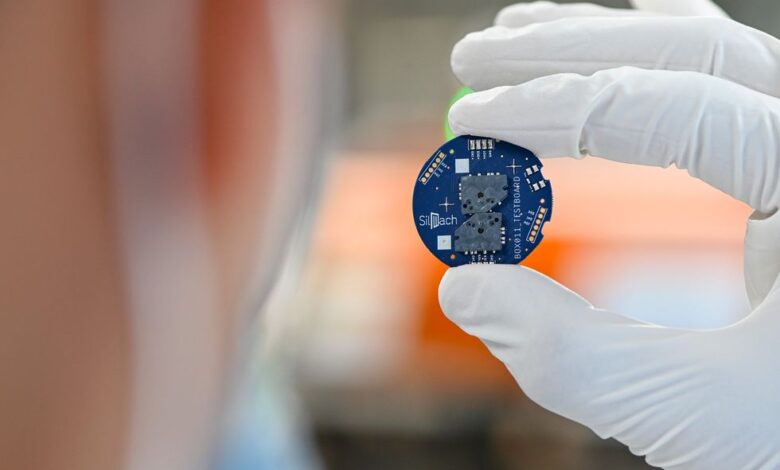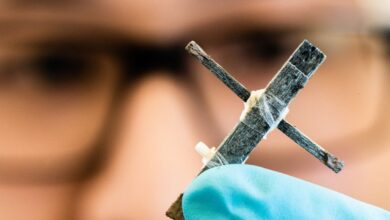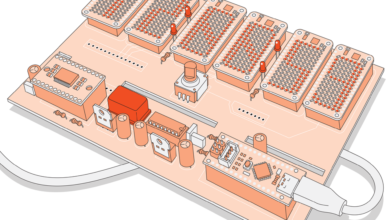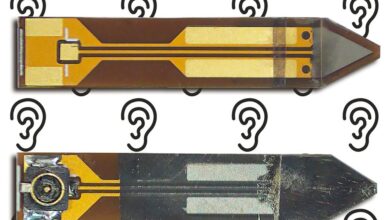New Watch Motor Seeks to Outsmart the Smartwatch

Could the analog quartz wristwatch, a mainstay of the timepiece market for more than half a century, be headed finally for a high-tech makeover? A French startup, SilMach, in Besançon, France, is betting big that it is. The company has used silicon microelectromechanical systems (MEMS) to produce an entirely new wristwatch motor for analog watches that is half the size and roughly three times more efficient in comparison with the standard stepper motor now used in wristwatches.
Really? Analog watches? Now? In the age of the smartwatch?
Time for a reality check: Quartz analog wristwatches actually accounted for close to three quarters of the market for conventional wristwatches in recent years, according to data compiled by the research firm Gitnux. And that overall market was valued at US $66 billion this year—slightly larger than the global market for smartwatches, by some estimates.
And yet today’s analog quartz watches are technologically unchanged from the first quartz watches, introduced 53 years ago by a Swiss consortium and by Japanese watchmaker Seiko. Those watches, and today’s watches, used a kind of synchronous direct-current stepper motor called a Lavet motor, invented in 1936 by Marius Lavet, a French engineer.
A technician assembles a TimeChanger wristwatch, the first to be equipped with MEMS motors.SilMach
The idea of using silicon MEMS to make a watch motor seized French engineer Patrice Minotti in 1996 while he was in Tokyo, heading a joint laboratory between the French Centre National de la Recherche Scientifique and the University of Tokyo. “I was personally inspired by the very first IC-processed electrostatic motor, which was created a few years earlier by Richard Muller (UC Berkeley),” Minotti wrote in an e-mail. “This very first IC-based MEMS motor was an amazing laboratory demonstrator but wasn’t able, by far, to drive the hands of a wrist watch…. I imagined a new MEMS motor architecture that could be able to drastically amplify the driving torque of state-of-the-art electrostatic MEMS motors.”
The type of MEMS actuator the group began working with was the comb drive. To understand how it works, imagine two combs with widely spaced teeth, facing each other with their teeth interleaved. Voltages applied to each comb set up an electrostatic attraction, or repulsion, that causes the combs to move toward, or away from, each other. To get rotational motion, levers and crankshafts are connected to the moving combs.
One big challenge was that 2,000 such combs were needed to produce enough torque to move the hands of the watch directly, without any gearing. Another hurdle was the circuitry needed to get, from a 3-volt watch battery, the 110-volt signals needed to power the electrostatic comb drives. In the current MEMs motor, this conversion is accomplished by an application-specific integrated circuit occupying just 2 millimeters square. It took nearly a decade to develop, starting in 2012, according to Pierre-François Louvigné, co-CEO of SilMach.
A wafer containing drive units for the wristwatch motor was produced at a MEMS fab facility in France. SilMach
In 2016, the company entered into a joint venture, called TiMach, with Timex Group, the watchmaking giant. Timex provided expertise needed to tweak the design of the MEMS motors so that they could be fabricated in a form readily usable by watch manufacturers. In their current form, the motors (one for each hand of a watch) and all the other components of a watch can be soldered directly on to a single surface-mount printed circuit board.
Such compactness and ease of integration is particularly advantageous for makers of hybrid smartwatches, such as Withings, Garmin, Citizen, Fossil, and Skagen. These watches have many of the functions of smartwatches—pulse and sleep monitoring, fitness tracking, Bluetooth communications, message displaying—along with physical hands, like a traditional analog watch and, of course, a motor. Because hybrid timepieces must combine that motor with a variety of electronic sensors and a display, the watches are typically quite large and space inside the case is usually very tight.
SilMach is betting on the expansion of the market for these hybrid smartwatches, for which their motor is very well suited. “In a typical hybrid smartwatch, the Lavet motor occupies up to 70 percent of the inside of the case,” says Jean-Baptiste Carnet, SilMach’s other co-CEO. Thus the smaller size of the MEMs motors means much more room for other electronics and sensors, he notes. Or the watches could finally be made compact enough to be worn by people with normal-size wrists.
In addition, the fact that the MEMS motors can be integrated directly with the other electronics simplifies manufacturing. “We think all watches, all wearables, will be fully electronic,” Louvigné declares.
The first watch using the new motor was recently offered as a limited edition on Kickstarter, for €1,850. The company is also in discussions with several major watchmakers, Louvigné says, adding that the company would have further announcements at the Consumer Electronics Show, in January.
IEEE Spectrum




